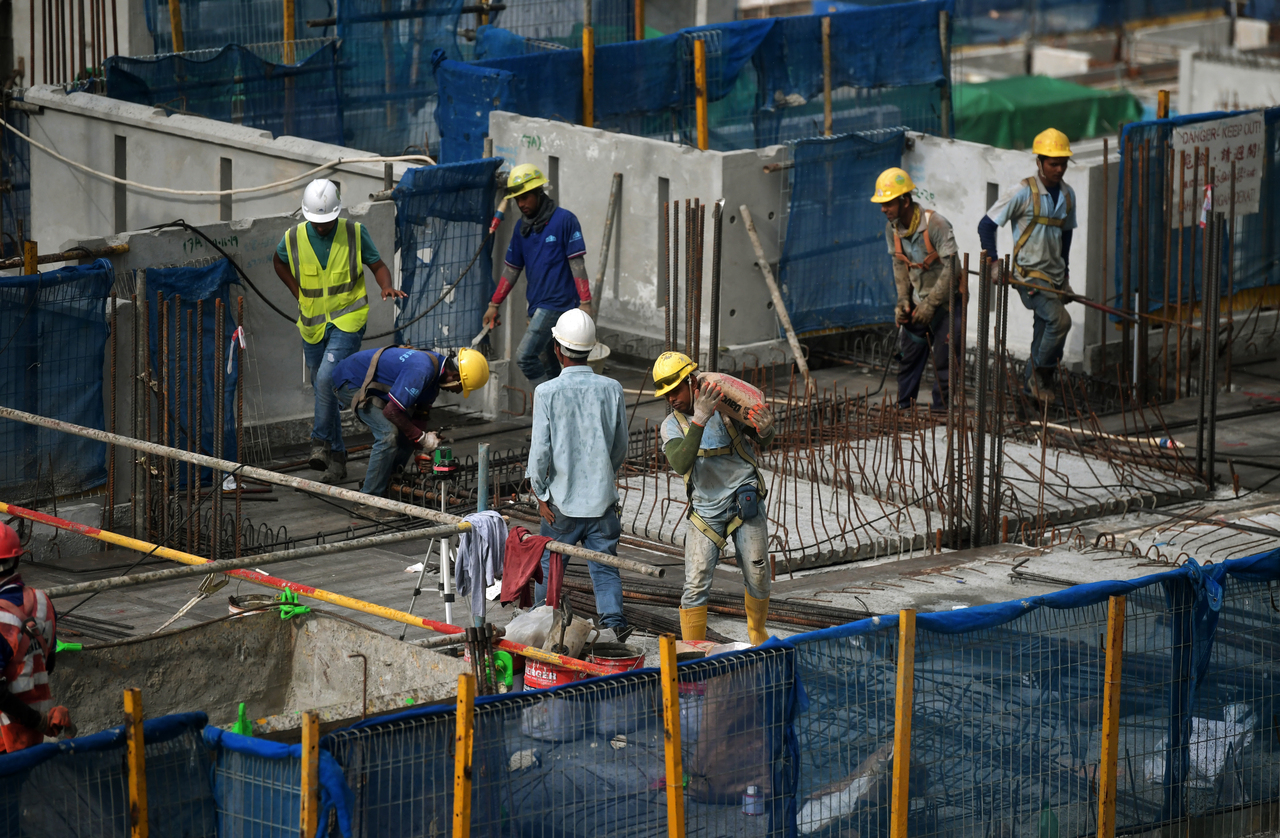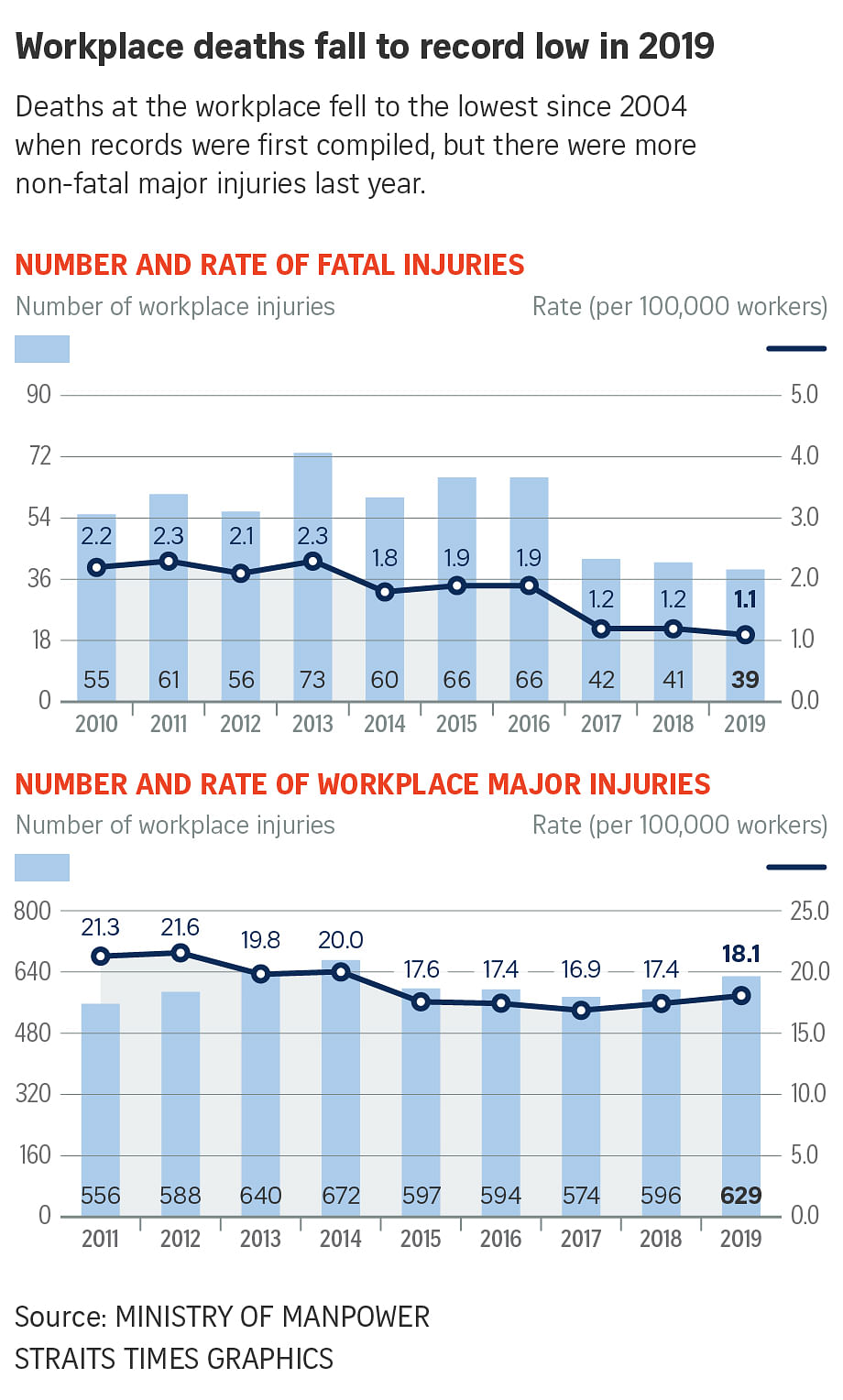Lowest number of workplace fatalities in 2019, but number of injuries rises
Sign up now: Get ST's newsletters delivered to your inbox

To reduce the rate of injuries, the MOM said it will enhance a course for construction workers to include experiential training and make it mandatory by 2022.
ST PHOTO: KUA CHEE SIONG
Follow topic:
SINGAPORE - The number of workplace fatalities last year in Singapore fell to a record low, but this improvement was blunted by a rise in major and minor non-fatal injuries, which were mostly caused by slips, trips and falls.
Deaths at the workplace fell to 39 in 2019, or 1.1 per 100,000 workers. This is compared with the 41 deaths in 2018 and also marks the lowest rate of fatalities since 2004, when records were first compiled.
But the number of injuries sustained at work rose, according to data released by the Ministry of Manpower (MOM) on Wednesday (March 11).
To reduce the rate of injuries, MOM said it will enhance a course for construction workers to include experiential training and make it mandatory by 2022.
It will also work with other low-risk sectors such as food services and retail.
Non-fatal major injuries increased by 5 per cent in 2019 to 629 cases. Major injuries usually involve the loss of a body part or function, and includes amputation, fractures, blindness or conditions that require medical leave of more than 20 days.
Meanwhile, minor injuries, which involve conditions that require medical leave of four days or more, also rose by 8 per cent to 13,111 cases last year.
MOM noted that the top cause for both major and minor injuries was slips, trips and falls, with construction workers, drivers, cleaners and security guards being most prone to major injuries because of this,
Such falls accounted for 34 per cent of major injuries and 28 per cent of minor injuries.
Major injuries also rose in the manufacturing, accommodation and food services, and wholesale and retail trade sectors. Fatalities also doubled in transport and storage, especially water transport.
MOM also found that the fatal injury rate for inexperienced construction workers who worked for less than three years was higher than their more experienced counterparts.
This is especially notable since the number of inexperienced construction workers may rise, with the industry's projected output set to reach up to $35 billion by 2023.
To better train inexperienced workers, MOM will include an experiential training component in the current construction orientation course on workplace safety and health.
This will use technology such as virtual reality to simulate high-risk situations like falling from heights.
It will target new construction workers and existing staff who failed their two-yearly competency test.
MOM will also step up education and inspection efforts for lower-risk industries, such as accommodation and food services and wholesale and retail trade, to reduce slips, trips and falls among workers - the main cause of non-fatal workplace injuries. For instance, a workplace safety and health module will be made mandatory for cleaners in 2022.
Last year, MOM reached out to about 3,000 cleaners in schools to educate them on workplace safety and health.

Mr Silas Sng, commissioner for workplace safety and health and divisional director of MOM's occupational safety and health division, said: "To counter the rising trend of non-fatal injuries, companies must conscientiously address slip, trip and fall risks by educating workers and implementing risk control measures."
In total, MOM conducted 17,000 workplace inspections, which uncovered more than 8,900 contraventions such as obstructed passageways, unguarded openings and unsafe means of access at work sites. It also issued 58 stop-work orders with an average duration of six weeks. Composition fines amounting to a total of $1,426,000 were imposed on close to 1,000 companies.
Plans are also under way to develop the workplace health and safety capabilities of 1,000 union leaders and industrial relations officers by March next year.
Mr Sng added: "The construction industry also needs to take ownership by inculcating safety mindsets and retaining experienced workers, who tend to be more risk-aware. If contractors have to bring in new workers, they will be subject to enhanced safety orientation requirements to level up their workplace safety and health knowledge."

